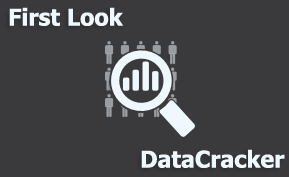Big Data Analytics
Business Intelligence
Levelwing: Where Business Intelligence and Digital Marketing Expertise Meet

Smarter questions and more meaningful answers are at the heart of the company mission at Levelwing, who combines advanced business intelligence technology with strategic marketing expertise. Since being founded in 2002 the company has been received a number of awards for its technology and its remarkable growth. We spoke to co-founder and managing partner Steve Parker, Jr. to learn more about Levelwing’s technology and strategy.
What was the inspiration behind you and Jeff starting Levelwing?

WEBSITE: www.levelwing.com
FOUNDED: 2002
LOCATION: New York City, NY; Charleston, SC
CUSTOMERS: Bridgestone, Gildan, New York Knicks
We had both been involved in the digital marketing industry for quite a number of years. I started working in this industry in 1995 and Jeff in 1996. Over that time we had both worked on the client side, working with agency partners and different sorts of vendors to help us accomplish things, and then also on the publishing side or content creation side where you’re creating content, great experiences and information for people to consume, whether it be B2B or B2C.
We had both become very frustrated with working with agency partners and the like because we often felt like they didn’t truly have our best interest interests in mind, they just wanted to go out and do reaely cool and exciting things all the time, but didn’t leave any thought for how we really accomplished major goals. Generally, trying to accomplish major goals are the hardest thing to do, and it’s not the sexiest thing to do, but we figured, look, we can go and do a better job.
There’s a lot of information people don’t consider when they’re making these decisions, and we want to go out and leverage that data and create something that will clearly speak to customer needs and challenge them frequently. That was sort of the inspiration for it, to go out and try and take a different approach.
You probably get this question a lot, but, in your own words, what is the service you provide for a potential business user?
So there’s a couple different ways of looking at that. Ultimately the service is to help provide a solution for some challenge or need. There’s an interesting way of looking at that because oftentimes the challenge or need isn’t quite clear or it’s not clear how to get there, so you have to create a unique process or structure of some sort around services that would allow you to derive the answer for whatever that need is.
So a lot of times what we’re trying to do for a customer is provide them with great insight into their marketing initiatives, but also operational initiatives for a business. There’s a lot of data that can be pulled from digital resources–be it website analytics, be it search data, be it social data in the marketplace–that can help make those decisions and make them more effective. We do that through three categories of services. One category is intelligence services, where we would look at what information we need to be able to make smart decisions and what process do we need to put in place to hold those decisions accountable. That would include gaining brand research information, competitive insights in the marketplace, taking data that a client already owns and enriching it to connect the dots and say, hey, here’s what these channels are driving and here’s how they’re driving them and here’s the media channels that those are flowing from.
Then there’s technology, which could include database development. A lot of times we’re dealing with a client and have to come up with these solutions or answers for which we’re pulling data in from all these disparate sources. A lot of times the data doesn’t want to talk to one another very well, so we have to build unique databases that will help all that information talk to one another so we can analyze it properly.
And then the last thing is strategy, which is really defining–out of all these things we can do–how are we going to outline it? What’s our plan? It’s like anything in life, if you don’t have a plan you’re probably not going to complete it.
Have you noticed any strong correlations in the sorts of organizations using your services?
The majority of our clients fall into two categories essentially. One of those categories is “low interest.” What I mean by low interest is they sell products and services people need but don’t necessarily want. I want an iPad, right? But I don’t need it. There’s absolutely nothing in this world that says I need that. I certainly didn’t need a Thunderbolt screen display that I have sitting in my office.
On the need side, though, those things are not low interest, but yet people often gravitate towards things that they don’t need but want. But there’s lots of things in life that we have to have. You have to have health insurance, right? You don’t want an HVAC system in your house, but you sort of like having heat and AC when you need it. You don’t want to have to buy new tires for your car because it’s just tires–but they are necessary to move your vehicle forward and have it perform well. You don’t want to do your taxes, but you have to do your taxes. It’s one of the most frustrating things in the world, but you have to go do it or else you’ll end up like Wesley Snipes.
So most of our clients fall in that low interest category. If they don’t fall into that category then they fall into a heavy research-intensive category. So travel and tourism is a big industry we work in as well.
The idea of “big data” continues become a real buzzword and a trend. Has that rise in popularity affected the way you guys do business? Offered any extra opportunities? Extra challenges?
Yeah, I would say the rise of the term “big data” hasn’t really changed anything. It’s just the new code word, which seems to happen every year. There’s some new thing everyone gravitates towards and they use those terms. The stuff that I’m talking to you about today, we’ve been talking about it since we started the company 2002. It’s nothing different. Some of the services we brought are different and we’ve, of course, grown as a company and have a lot more people and all those sort of things, but the term itself hasn’t really changed anything.
For example, my family is in the liquor and wine business and they own a fairly large liquor store in Tennessee, in the Nashville area. My dad, before he passed away, he ran that store for many years and he sort of kept everything in his head. But it’s really hard to keep hundreds of thousands-millions even–of dollars of inventory and every individual bottle, where it’s from, what it tastes like and all of that in your head. It’s hard to keep track of what’s your profit margin on these things you’re selling. He was very thoughtful and ran a very good business for many years, but when he passed away my sister and my mom , who were going take over responsibility for all of them, were completely in left field. They didn’t have any of this stuff in their head. Yet now that business hasn’t missed a beat because my sister happens to be someone who’s very analytical and thoughtful and thinks through all those types of things and uses software to do that. But the same holds true for a very large–say twenty billion-dollar–company.
Bridgestone, for example, is a large client of ours that understands the need to manage large amounts of data and the value that comes from harnessing this information. They’re a twenty, twenty-five billion-dollar company, and they have lots of data. They have data across the manufacturing and retail sides of their business as well as their dealer channels. It’s how you leverage that information to your advantage. So the term hasn’t really changed anything. I mean, people like to use it a lot, and I think think they use this big moniker, “oh, we’re into big data!” But it doesn’t matter if you’re into big data or not if you’re not defining what goals and priorities and plans are and holding things accountable to those goals. That’s what it really boils down to at the end of the day.
Have you run into any new or unusual use cases for the data you deal with? What stands out and how has it influenced the work you’re doing?
If I had to say “here’s the industry segment we play in,” it’s really that intersection of taking all that data and creating insights and intelligence around it so you can answer things you needed answers to, but also get answers to things you never even thought of before. It’s the intersection of business insights and marketing. That’s primarily where we focus most of our energy.
One of clients right now, Gildan, they’re a company that manufactures t-shirts, socks and underwear. They’re a brand that’s not really recognizable, but they do own 70-percent market share give or take of the private label t-shirt market. For them it’s about being effective digitally through all their efforts, but also measuring the final impact of, say, what their Super Bowl ad does for them. So for us to measure all the things as it relates to Gildan, both from an event standpoints, things they’re doing on the ground, if you will, as part of the Super Bowl, and then also what’s the real impact of the Super Bowl ad, what’s it doing for all of our metrics that we’re measuring outside of just simple metrics like people talking about us.
What kind of traits do you think a business analytics company needs to have in order to be successful?
If you look at the companies in our market segment they don’t typically employ a lot of people whose backgrounds are more analytical. I mean, we have people on staff who used to be lawyers and are really critical thinkers. We hire a lot of people with backgrounds in mathematics, statistics, economics, you name it. But I would think from a true, more overall trait standpoint, you really just need a team that believes in thinking critically about the root of the issue. It’s really easy to get caught up in convenience metrics, and convenience metrics are exactly what they sound like, they’re just things that are really easy to measure. How many people clicked the ad? How many people saw my ad? How many people follow me on Twitter? Those sorts of things… They’re not critical questions. In fact, I would say most of those stats are pretty meaningless. They’re not going to help you make a critical business decision.
I hear this questions probably once a week from a client: the bounce rate on our website’s too high. OK, and that’s a problem. When you look at that on the surface you could say oh, yeah, I guess that’s a problem because, as you know, 50 percent of the people coming to the site are just seeing that one page and leaving. From the surface level, a very convenient perspective, you can see that as a problem. But when you think critically about it, it’s like, well, what if they got all the information they needed on that page? I had this conversation with a big hospital system last week, in fact. And I said, well, if somebody searched for “I need an endocrinologist in Charleston, South Carolina,” and your page is one of the pages that showed up, and they clicked on it, and that that page highlighted three physicians in the market and listed their phone numbers then that was the only page they went to and they left. The reason this may have been good is because they got the information they wanted, called one of those numbers, made an appointment and now they’re going to see a doctor in your network. The bad part of it is that you don’t have call tracking implemented on your site from an analytics perspective, so you don’t know if they called or not. We can fix that problem very easily, and then you’ll know whether or not those bounce rates are bad or good.
What kind of year is 2013 going to be for Levelwing? What are your objectives for the year and what is going to be your strategy for achieving them?
Our objectives haven’t dramatically changed from what they were the year prior. I mean, there’s slight modifications to them. In some areas we already operate in, like Latin America, Europe and Asia, we’re going to be more aggressive and continue to grow into those markets. That takes, of course, a very specific, concerted effort. We’re in the process of launching to market–hopefully by the end of the first quarter–a new service that’s really been very thoroughly tested over the last two years. You know, a lot of the things we develop our just used internally for ourselves, but this will be one that we’ll likely allow third parties to use. That will be a different thing, of course, because we haven’t reaely put third party things out into the marketplace very often.
Want more Business Intelligence? Get the latest news on software trends like cloud BI and real-time analytics with Business-Software.com’s Business Intelligence resource page. To learn about the leading BI software solution in the industry like LevelWing, download the free Top 10 BI report.





